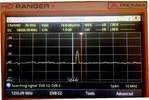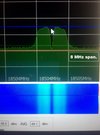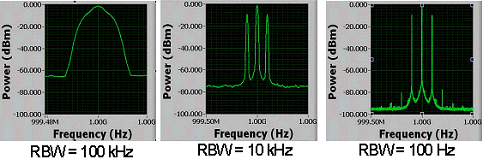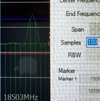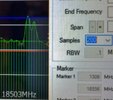Hi,
I will accept donations (10€, 10£, 10US$ - whichever is more convenient and cheaper) through my PayPal account. I have informed myself and there is no worries, as long as I don't make a business out of it, which I won't... So far I have given out around 20 activation codes - so you guys get an idea of the business dimensions!

Anyway, I want to make the following very clear:
- I am giving out free codes and intend to continue doing so. To make things easier for me, these free codes will terminate on the last day of March, June, September or December - you always get activation codes for the next deadline.
- You may request as many renewals as you want.
- You may request several codes for your main PC, laptop, tablet, etc.
- Donations are NOT mandatory at all, they will not give any extra functionality - but I will return the good-will with a permanent activation code for your main PC, laptop, tablet, etc.
- Donations will NOT entitle to any special support or feature request - all functionality can be extensively tested with free activation codes and new functionality is implemented according to my ideas, people's suggestions, feasibility, etc.
- Donations will help me paying for additional devices, so I can possibly enhance the functionality of the software and better support devices, which I currently don't own.
Donation instructions will be included in future releases, but basically consist of these lines and the required e-mail address of my PayPal account.
I do appreciate some of you being eager to make a donation - it means a lot more to me than the simple value of the donation itself.
I will explain:
I am a metallurgical and materials science engineer and I work with CAD/CAM/CAE systems. I have no formal education on RF, broadcasting, signal distribution, etc.
However, in the last 20 years, I dedicated my free time to satellite reception. I started with analogue satellite receptions, went over to digital reception, at some point got my first DiSEqC motor and so on.
I got me certified with an amateur radio license.
But my true passion started when a friend lend me a Satlook Digital NIT! I was fascinated with the real-time spectrum.
I started to save up money for such a field meter, but God, they were expensive and it was just for private hobby use. But I had an idea: because I am fluent in several languages, I wrote an email message offering user guide translations to every field meter manufacturer in the world.
None replied.
So I purchased the Emitor Satlook Digital NIT.
And then, out of the blue, I got a translation request from a well-known field meter manufacturer!
I did the translation, fast and at great price… And a great relationship was born. Naturally my initial plan got real and after some firmware strings translations, I received the first professional field meter to make translations easier.
Over the years I wrote many translations and even wrote manuals from scratch.
Later on I started to work with TELE-satellite, now called TELE-audiovision. This gave me many more challenges and test-equipment, too (I probably own the world’s largest TV, CATV & SAT field meter collection).
Note that all this work was done as a hobby in my free time, apart from my two regular jobs! Eventually I did make some money with it, but not much and most of the income was invested in more equipment.
And this year, I decided to dive deeper into the spectrum analysis.
So what did I do?
I purchased a Siglent SSA3021X spectrum analyser (1449 Euro), to basically learn how to work with a spectrum analyser. Some may say I am crazy, but in my opinion, it is cheaper to buy such an equipment for learning purposes, than taking some dull course. Also, I always wanted to own one and that’s cheaper than owning a KTM cross bike, to name an example.
Then I purchased two SMA Simple Spectrum Analyser devices. Why two? Easy: I broke the first one after two days. Meanwhile I repaired it by replacing the M810 IC using a hot air solder station (which I bought to learn more about SMD repairs).
Then I spend like 6 months writing the software to its current state.
Did I mention that during this period I bought other stuff, related to all of this:
- SMA Noise Source PCB (partially damaged due to stupid short cause by cable lying on my desk)
- SMA Noise Source second version in aluminium case
- DC Blocker
- SMA to F adapter
- SMA to SMA adapter
- N to F adapter
- N to BNC adapter
- Other adapter
- Cables
- Attenuator
- Switchable attenuator
- …
Two weeks ago I bought a Rigol DS1054Z oscilloscope to learn how to use a modern digital oscilloscope, but in preparation of a possible LNB power module with H/V, Low/High and DiSEqC control, also.
I ordered two sample Texas Instruments modules for that purpose (50 Euro, each), but run into some problems with Texas Instruments.
And today I got myself a cheap desktop 24MHz programmable signal generator.
I say all of this, to let you know how much I invested in stuff to acquire the required knowledge which enables me to write a program like this one. For me it was not something I wrote in a few hours – I had to learn a lot!
So this is why it means a lot to me, that you guys appreciate my software. It is a recognition that in the end the efforts paid off! And really, I don’t care so much about the donations. They won’t pay my bills. But they will help me buy some further equipment, which otherwise I couldn’t justify. Like why should I purchase the 35MHz-4.4GHz version? Or the NWT4000? The only reason is to better support them. Myself, I don’t need them – I have a REAL spectrum analyser on my desk, capable of doing 9 kHz up to 3.1 GHz…
Sorry for the long post!
BTW: I started writing a user guide, but it will take much longer than I imagined. I forgot how many functions there are now. Also, there are some tricks, which seem obvious to me, but apparently, people did not realize it.
Example: why does the shaded spectrum look fine at 500 samples, but has just a few vertical lines when using 100 samples?
Because these lines represent the exact samples!
If you use 1000 samples, the live trace will be totally green in shaded mode, because the screen has a horizontal resolution of 1000 pixels, so each pixel column has exactly one line.
With 500 samples, the software draws every odd line. But because of anti-aliasing activated on purpose, the shaded area is a darker semi-transparent green. This is nice if more than one trace is being drawn, as the colours of the different traces will blend.
At lesser samples, you start to see the lines, which is nice, because you can exactly see which points have been measured!
The curve itself is not just straight connections – it is a best-fit polynomial curve of the sampled points.
All of this will result in a much better resolution than most TV/SAT field meter!
Regards,
vma



